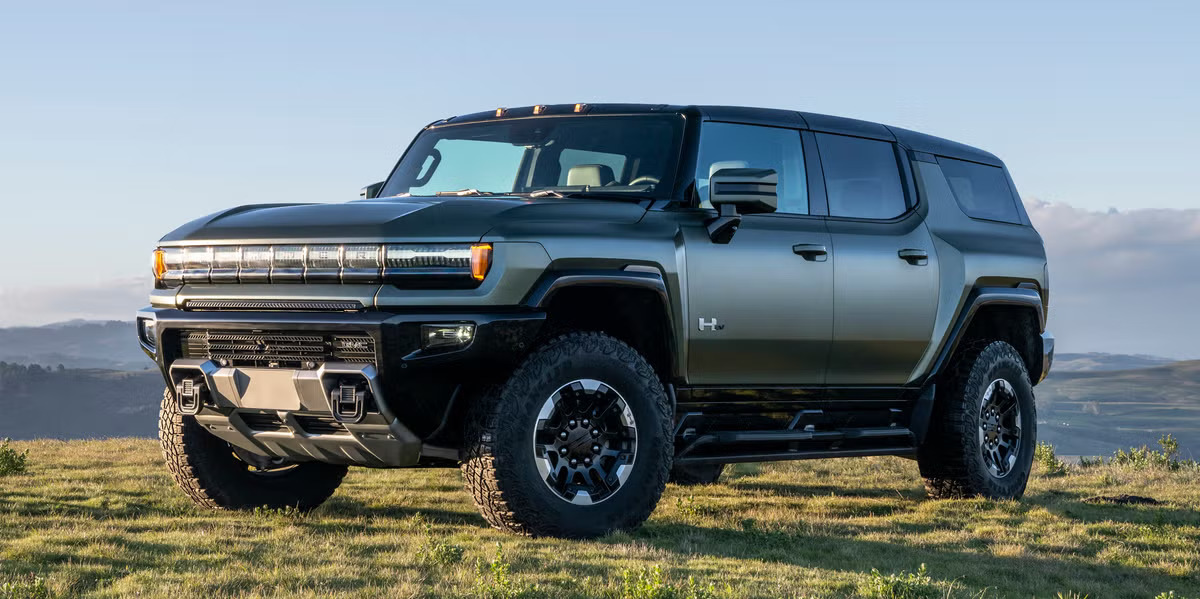Electric vehicles have grown tremendously in popularity over the past decade, moving from niche options to mainstream contenders in the automotive market. More than just being an alternative to gasoline-powered cars, modern EVs are evolving into multifunctional platforms that offer capabilities far beyond transportation.
One of the most practical features emerging in the latest generation of electric vehicles is the inclusion of onboard power outlets. These outlets allow drivers to tap into the vehicle’s large battery pack and use it as a portable power source, creating opportunities for new uses that traditional cars simply cannot match.
The ability to power tools, appliances, or even entire homes in emergencies has quickly become a defining feature for many new EV models.
Yet, despite the clear advantages, not all electric vehicles come equipped with these useful outlets or power export functions. There is a wide disparity between models that offer practical power options and those that lack any such feature.
The presence of onboard power outlets can change how people use their vehicles in profound ways. For instance, electric trucks like the Ford F-150 Lightning and Rivian R1T offer outlets designed to supply hundreds or thousands of watts to power construction tools, outdoor equipment, or entertainment systems without relying on noisy, polluting gas generators.
These vehicles effectively become mobile power stations, increasing their utility for work, recreation, and emergency preparedness.
Similarly, SUVs and crossovers like the Hyundai Ioniq 5 introduce vehicle-to-load (V2L) technology that allows users to plug in everyday devices and appliances. This transforms the vehicle from a simple transport machine into a versatile power source that supports a variety of lifestyles.
However, this capability is not universal across the EV market. Many popular electric cars such as the Nissan Leaf, Chevrolet Bolt EV, and Volkswagen ID.4, offer no onboard power outlets or V2L functionality. These vehicles remain focused primarily on transportation, with little consideration given to how the battery can be used beyond driving.
This limits their usefulness in scenarios where external power would be beneficial camping trips, job sites without electricity, or emergencies where a backup power source is crucial. Without onboard outlets, owners of these EVs must carry additional generators or portable battery packs, which adds cost, weight, and complexity to their setups.
The variation in onboard power capabilities highlights a broader divide in electric vehicle design philosophy. Some manufacturers prioritize delivering extended driving range, efficiency, and affordability, opting to keep vehicles simple and focused on core transportation functions.
Others seek to provide added value and versatility by integrating power export features that elevate their EVs into multipurpose tools for modern life. This divergence influences buyer decisions and reflects the evolving expectations of consumers who want more from their vehicles than just mobility.
This article examines five electric vehicles that feature useful onboard power outlets and compares them with five popular EVs that lack these practical features. The goal is to illustrate how the inclusion or omission of power export functions affects the vehicle’s utility and appeal.
By analyzing these models in detail, it becomes clear which vehicles offer genuine multi-use capabilities and which remain limited in scope. Understanding these differences can help buyers make informed decisions based on how they plan to use their electric vehicles beyond simple driving.
Also Read: 5 Toyotas That Run Forever vs 5 That Suffer Surprise Reliability Issues
5 EVs With Onboard Power Outlets
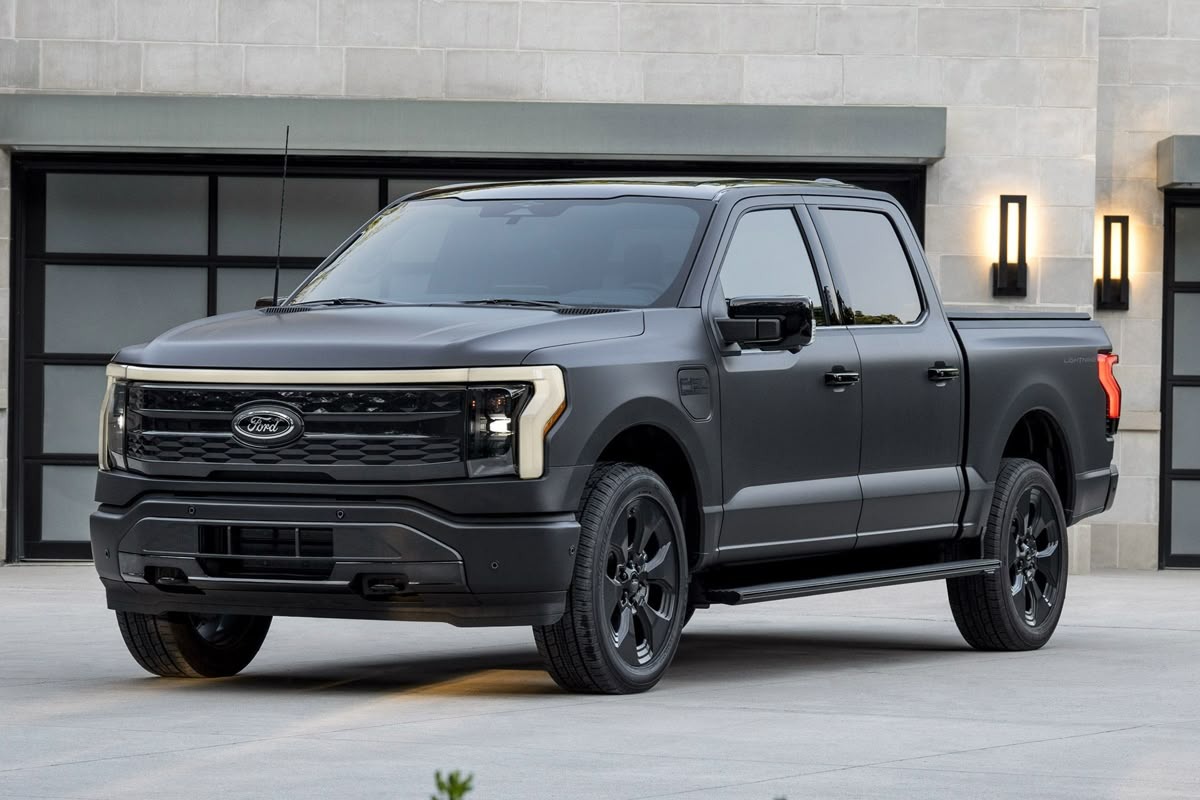
1. Ford F-150 Lightning
The Ford F-150 Lightning redefines what a pickup truck can be by incorporating onboard power outlets that significantly enhance its utility. This electric truck includes multiple 120-volt outlets strategically placed around the vehicle, including the bed and the front trunk, commonly called the “frunk.”
These outlets allow users to power tools, appliances, or electronic devices directly from the truck’s battery. This makes the Lightning far more than just a vehicle for transportation it becomes a mobile power source capable of supporting various activities like outdoor work, tailgating, camping, and even emergency backup power during outages.
The inclusion of a 240-volt outlet option further broadens the Lightning’s capabilities, enabling it to support heavy-duty equipment that normally requires specialized power sources. This is a game-changer for tradespeople who often rely on portable generators, as the Lightning offers a clean, integrated, and highly efficient alternative.
The battery capacity of the F-150 Lightning, with options reaching around 131 kWh, supports these power outlets without sacrificing driving range or vehicle performance. Ford has engineered the vehicle’s electrical system to handle simultaneous driving and power supply, allowing the truck to serve as a mobile energy hub.
For instance, a contractor could drive to a job site, plug in power tools directly, and maintain productivity without bringing additional gas-powered generators.
Similarly, outdoor enthusiasts can use the outlets to power camping gear such as lights, cookers, or even small refrigerators. This level of utility is rare in EVs and highlights Ford’s recognition of the practical needs of its customers. It is a vehicle designed not just to electrify transportation but to electrify life on the go.
The layout and accessibility of these power outlets are well thought out. For example, the bed’s outlets are weatherproof and positioned to minimize cable clutter, making it easy to plug in devices without hassle. The frunk’s outlet adds another convenient spot for powering gear, and inside the cabin, passengers can access additional power sources.
This multi-point distribution of outlets shows that the design team prioritized user convenience and practical use cases. It is also noteworthy that these outlets can be powered even when the vehicle is turned off, which is vital during power outages or outdoor activities that require electricity for extended periods.
Moreover, Ford has integrated smart technology around these outlets to manage power consumption and ensure safety. The truck can monitor battery levels and prioritize power allocation, helping prevent unexpected depletion that could leave drivers stranded.
This intelligent management enhances the confidence users have in relying on the vehicle for power beyond transportation. The Ford F-150 Lightning’s onboard power outlets set a high bar in the electric truck market and demonstrate how an EV can transcend traditional expectations by offering robust utility features that fit real-world needs.

2. Rivian R1T
The Rivian R1T is designed with versatility at its core, and onboard power outlets play a crucial role in achieving this vision. The vehicle includes several 120-volt and 240-volt outlets distributed in and around the truck bed and the unique gear tunnel a storage compartment that runs beneath the bed.
These outlets provide up to 3,000 watts of continuous power, allowing the truck to support a wide range of devices and appliances.
This capability transforms the R1T from a simple means of transport into a mobile power station. Whether it’s running power tools at a remote job site, keeping a camper’s equipment charged, or powering entertainment systems during tailgate parties, the R1T’s onboard outlets offer unparalleled flexibility.
One of the standout aspects of Rivian’s power outlets is their integration with the vehicle’s electrical architecture. The large battery pack and advanced power management system allow the outlets to deliver stable and reliable electricity without significantly impacting the vehicle’s driving range.
This balance between power supply and vehicle performance reflects Rivian’s engineering focus on real-world usability. Users can confidently use the outlets for extended periods, knowing their EV is designed to handle such demands.
The truck’s vehicle-to-load (V2L) capability further enhances this by allowing the R1T to supply power to external devices even when the engine is off, increasing its utility in outdoor or emergency scenarios.
The gear tunnel is a particularly innovative feature that amplifies the practicality of the onboard outlets. This tunnel not only provides extra storage space but also comes equipped with power outlets, allowing users to plug in tools or charge batteries while keeping cables neatly organized and protected from the weather.
The placement encourages efficient use of space and easy access, which is critical for users who may carry a variety of equipment for work or recreation. The R1T’s power outlets are designed with durability in mind, suitable for rugged outdoor environments where exposure to dirt, water, and rough handling is common.
Inside the cabin, Rivian offers additional power options for passengers, including USB-C ports and traditional 12-volt outlets. This supports the growing number of electronic devices people carry daily.
The combination of interior and exterior power outlets makes the R1T an ideal vehicle for people with active lifestyles who need reliable power wherever they go.
Rivian’s approach to onboard power reflects an understanding that modern EV users want their vehicles to support diverse activities, from professional work to adventurous exploration, solidifying the R1T’s position as a leader in the utility EV segment.

3. Tesla Cybertruck (Expected Features)
Though the Tesla Cybertruck has yet to reach widespread consumer hands, its expected onboard power outlet features promise to push the boundaries of what an electric pickup truck can offer. Tesla has communicated plans to include multiple 120-volt outlets throughout the vehicle, both inside the bed and within the cabin.
These outlets are expected to be capable of powering common household devices, tools, and other electrical equipment. The inclusion of these features aligns with Tesla’s vision of creating a multifunctional vehicle that appeals to contractors, outdoor enthusiasts, and everyday users who want their trucks to serve beyond transport.
Tesla’s reputation for innovation and efficiency suggests that these outlets will be integrated seamlessly with the Cybertruck’s power management system, ensuring that the vehicle’s battery life is optimized while providing ample power to external devices.
Given the Cybertruck’s large battery options, ranging up to 200 kWh the onboard power outlets will likely support extended use without severely impacting driving range. The Cybertruck’s durable exoskeleton design, combined with its robust electrical architecture, makes it well-suited for rugged use, where onboard power can be invaluable.
One of the most exciting possibilities with the Cybertruck’s power outlets is their potential compatibility with Tesla’s broader ecosystem. For instance, Tesla owners could use their Cybertruck to power other Tesla products such as solar panels or Powerwall home battery systems, creating an integrated energy solution.
This kind of vehicle-to-home (V2H) functionality could make the Cybertruck an essential part of a household’s energy resilience strategy, especially in regions prone to blackouts or natural disasters.
Furthermore, the Cybertruck’s anticipated features include the ability to deliver power while stationary, enabling it to function as a backup generator or support work sites without access to external electricity.
This would provide Tesla an edge over competitors by turning its vehicle into a reliable power source for professional or recreational use. As the Cybertruck enters the market, it may redefine expectations for onboard power outlets in EVs and set new standards for functionality and versatility in electric trucks.

4. GMC Hummer EV
The GMC Hummer EV combines powerful electric performance with thoughtful onboard power outlet integration, turning the vehicle into a multi-purpose powerhouse. Equipped with 120-volt outlets in the bed and multiple locations inside the cabin, the Hummer EV provides users with a flexible and reliable means to power a range of equipment.
This feature complements the vehicle’s off-road capabilities, allowing users to venture into remote locations with the confidence that they can run tools, appliances, or electronic devices without external generators or battery packs.
The Hummer EV’s electrical system is designed to support high power outputs, making the onboard outlets suitable for heavy-duty tools or recreational devices alike. Whether it’s charging drones, powering camping lights, or running portable air compressors, the outlets provide robust support for various use cases.
The large battery pack and sophisticated power management ensure that users can draw electricity for hours without risking being stranded due to battery depletion. This capability is a clear benefit for users who want their EV to serve as a versatile platform for work and play.
Inside the vehicle, the multiple outlets also enhance passenger convenience by enabling device charging and supporting electronic gadgets common in modern life.
This is particularly useful on long trips where multiple devices need power simultaneously. The combination of interior and exterior outlets emphasizes GMC’s commitment to creating an EV that supports diverse lifestyles, from weekend adventurers to professionals needing mobile power.
GMC’s inclusion of onboard power outlets also reflects the broader trend of electric vehicles moving beyond traditional roles into becoming integrated lifestyle tools.
The Hummer EV’s power outlet system is designed for durability and reliability in rugged environments, which is critical given the vehicle’s off-road ambitions. This adds a layer of practicality to the Hummer EV, ensuring it stands out in a competitive market by delivering functionality that many other EVs overlook.
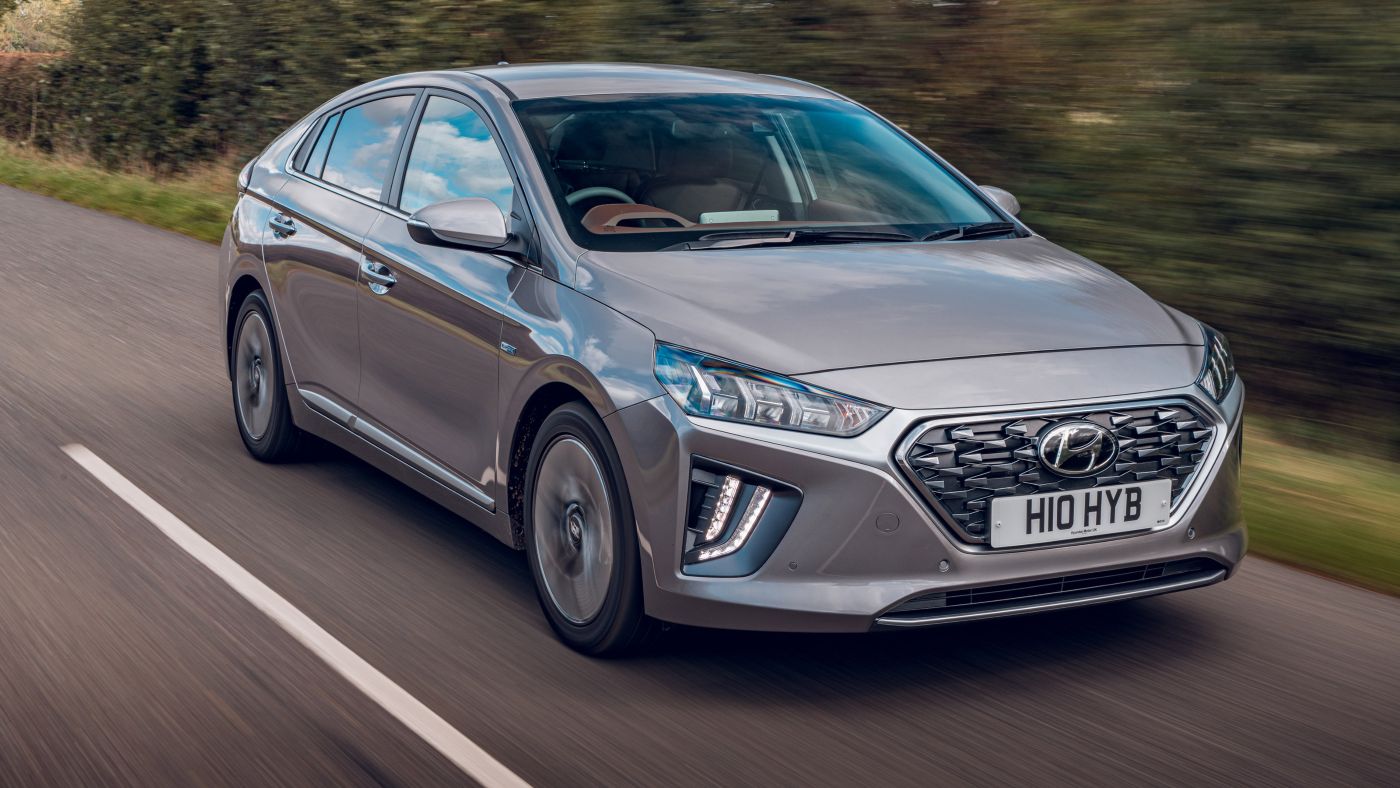
5. Hyundai Ioniq 5 (Vehicle-to-Load Functionality)
The Hyundai Ioniq 5 introduced vehicle-to-load (V2L) technology to a wider audience, offering onboard power outlet functionality that sets it apart from many competitors in its price range.
This feature allows the vehicle to supply up to 3.6 kW of power to external devices through a built-in outlet, essentially turning the Ioniq 5 into a portable power station. This capability greatly expands the vehicle’s utility, providing users with a practical power source for outdoor activities, work situations, or emergency scenarios.
Unlike traditional outlets that might only offer 120 volts, the Ioniq 5’s V2L system supports a range of voltages and can power various appliances, tools, or electronic devices.
This means that whether a user is camping, tailgating, or facing a power outage at home, they can rely on their EV to keep essential equipment running. Hyundai has integrated the V2L outlet in an easily accessible location, making it simple to connect devices without complicated setups or additional adapters.
The Ioniq 5’s relatively large battery pack and efficient power management ensure that using the V2L feature does not drastically reduce driving range. This makes it practical to use the vehicle as a power source over extended periods, offering a true alternative to carrying separate generators or power banks.
This integration of V2L technology exemplifies Hyundai’s forward-thinking approach to electric vehicles, emphasizing utility and convenience alongside range and performance.
Additionally, the V2L feature contributes to a broader trend in the EV market where vehicles serve as flexible energy assets, not just transportation.
This kind of innovation aligns with increasing consumer demand for multi-functional vehicles that support varied lifestyles. The Hyundai Ioniq 5’s onboard power outlets through V2L technology make it one of the most user-friendly and practical EVs for those seeking more from their vehicle beyond driving.
5 EVs That Lack Useful Features

1. Nissan Leaf
The Nissan Leaf was one of the first mass-market electric vehicles, and it played a pivotal role in popularizing EVs globally. However, despite its early success and affordability, the Leaf falls short in providing onboard power outlets or any meaningful power export functionality.
Unlike some newer EVs that offer vehicle-to-load capabilities or simple 120-volt outlets for external use, the Leaf’s electrical system is designed primarily to power the car itself. This limits its versatility, especially for users who want to harness their vehicle as a mobile power source in emergencies, work environments, or outdoor activities.
For owners who might expect to plug in external devices or appliances from their EV’s battery, the Leaf offers little in the way of convenience. The absence of onboard power outlets means users have to rely on separate power banks, generators, or other devices to meet their electrical needs away from the grid.
This is especially limiting for those who use their vehicles for camping or off-grid adventures, where external power sources are critical. Additionally, the Leaf’s battery capacity, while sufficient for daily commuting, does not support the kind of sustained external power use that other EVs with dedicated outlets can manage.
The Leaf’s electrical design focuses heavily on efficiency and simplicity, which helped keep the vehicle affordable and accessible to a broad range of buyers. Yet, this also means it lacks many of the modern convenience features that have become common in newer electric vehicles.
As EV technology advances, consumers increasingly expect their vehicles to offer more than just transportation they want added utility and flexibility. The Nissan Leaf’s omission of onboard power outlets places it at a disadvantage compared to competitors that integrate these features into their designs.
Furthermore, the Leaf’s lack of power export functionality means it cannot serve as an emergency backup power source. During power outages or natural disasters, EVs that support vehicle-to-load or vehicle-to-home (V2H) technologies become invaluable, providing temporary power for essential appliances and devices.
The Leaf, however, does not have this capability, which may deter buyers seeking a multi-purpose electric vehicle that can support both mobility and power needs.
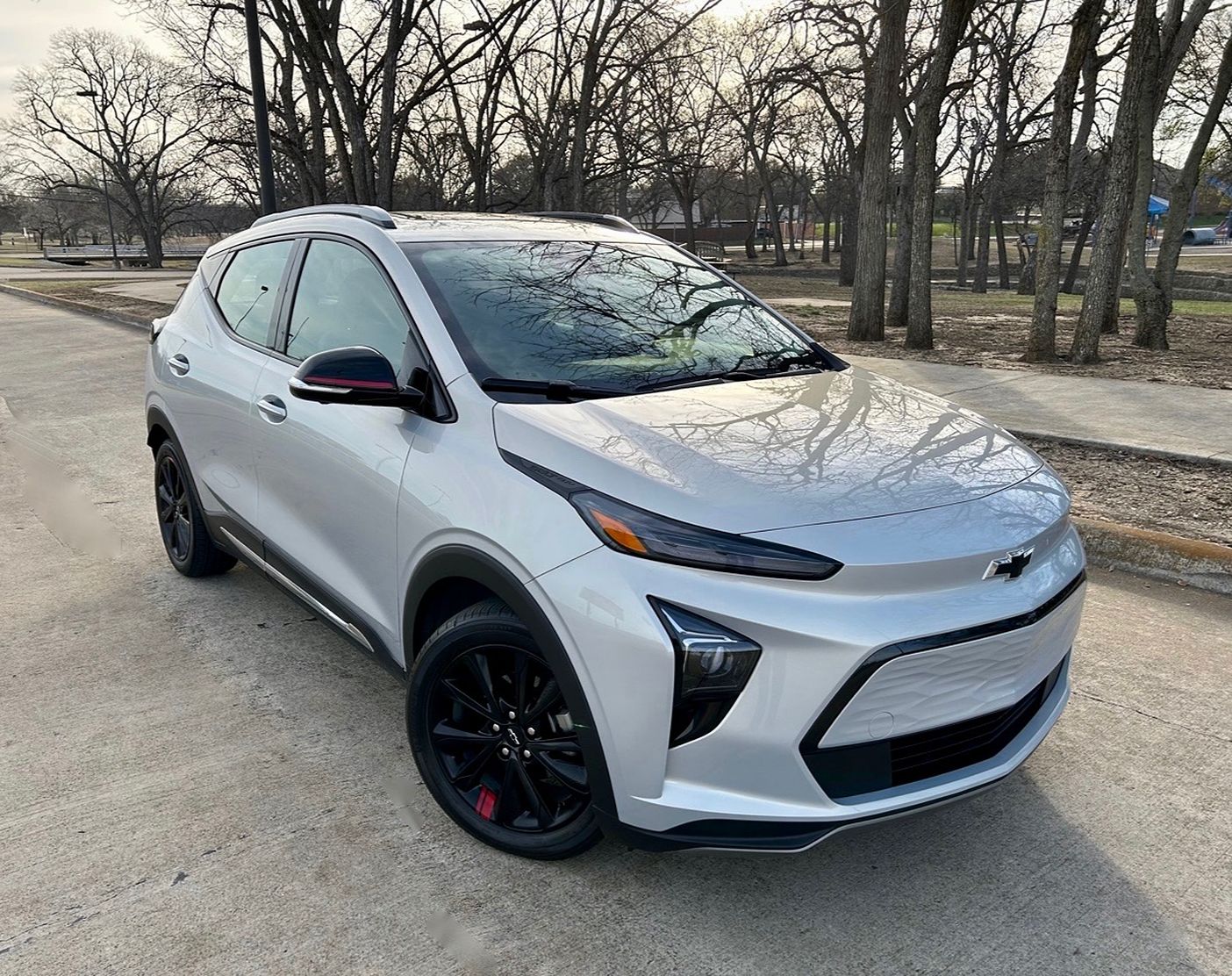
2. Chevrolet Bolt EV
The Chevrolet Bolt EV is well-known for its impressive range and compact design, making it a popular choice among city drivers and those seeking an affordable electric car. However, the Bolt EV does not include onboard power outlets for external use, limiting its utility beyond standard transportation.
Unlike some trucks and SUVs that offer multiple outlets for powering tools, appliances, or outdoor gear, the Bolt is primarily focused on driving performance and efficiency, without offering any meaningful external power support.
For consumers who want an EV that doubles as a power source, the Bolt’s lack of onboard outlets means additional equipment is necessary for outdoor adventures or emergency power.
This can be inconvenient and costly, as portable generators or external battery packs are required to fill the gap. While the Bolt excels at delivering an electric driving experience, its limited feature set in terms of onboard power means it misses opportunities to serve as a more versatile lifestyle vehicle.
The Bolt’s smaller battery capacity and compact chassis contribute to its limitations in this area. Providing high-wattage power outlets would require additional engineering and battery capacity that might compromise the vehicle’s core strengths, such as range and affordability.
As a result, Chevrolet seems to have prioritized keeping the Bolt simple and accessible over expanding its functionality with onboard power features. However, this choice restricts the vehicle’s appeal for users seeking multi-use electric vehicles.
Moreover, the absence of any vehicle-to-load or vehicle-to-home capabilities means the Bolt cannot be used as a backup power source during emergencies. This reduces its usefulness in situations where electricity is scarce or unavailable, such as camping trips or power outages.
While the Bolt is a solid EV in many respects, its lack of onboard power outlets limits its flexibility and may push consumers toward other models that better meet their varied power needs.
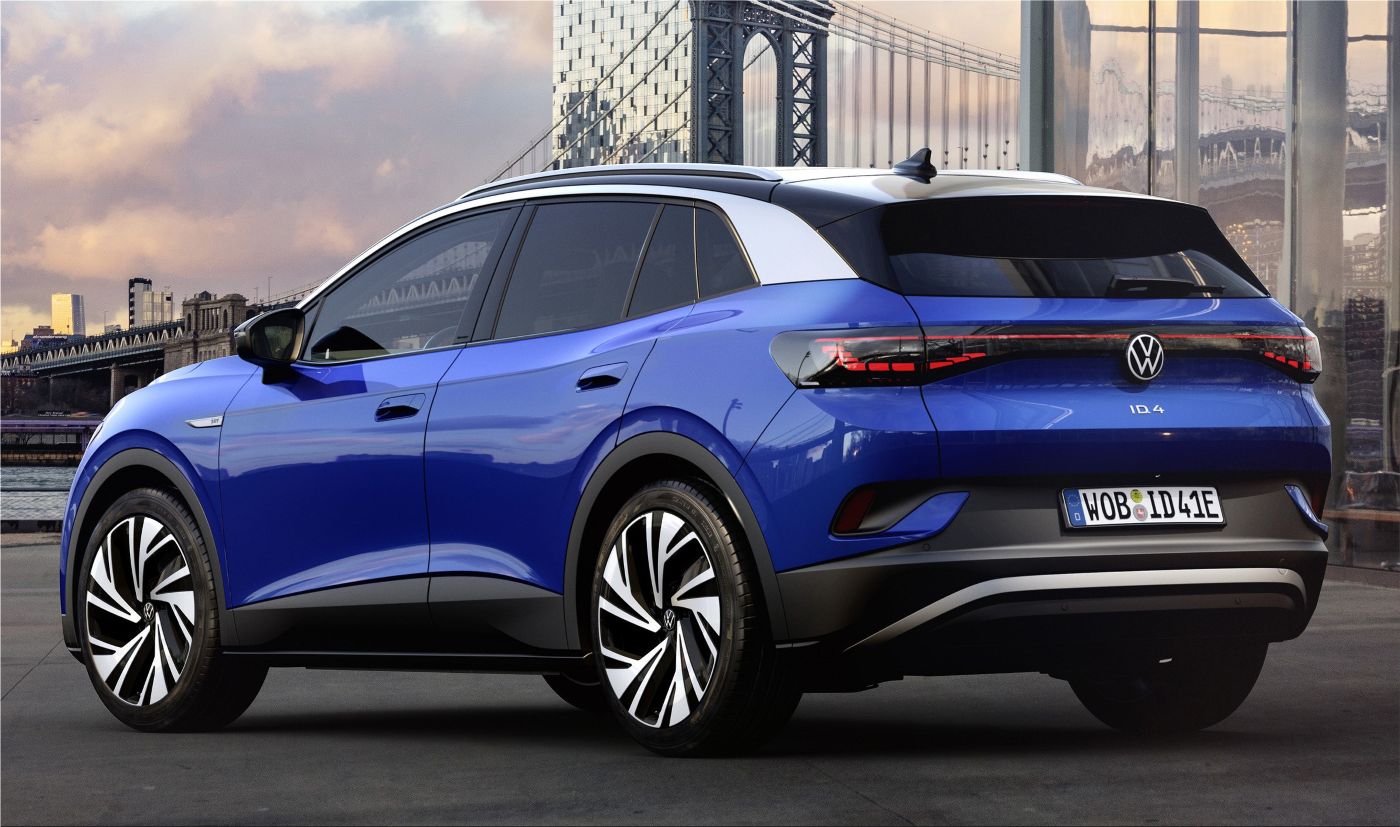
3. Volkswagen ID.4
The Volkswagen ID.4 is a stylish and spacious electric SUV that has gained popularity for its comfort and technology. Despite these strengths, it does not offer onboard power outlets or vehicle-to-load functionality, which is an omission for those seeking greater utility from their EV.
The ID.4 focuses largely on providing a smooth driving experience, ample interior space, and modern infotainment, but it cannot supply power externally, limiting its practicality in many real-world situations.
Users who want to use their EV as a power source for tools, camping equipment, or emergency devices will find the ID.4 falls short.
The absence of built-in outlets means the vehicle cannot directly power external electronics, forcing owners to bring along additional equipment or forgo the convenience altogether. This limits the vehicle’s appeal for outdoor enthusiasts, contractors, or anyone looking to maximize their EV’s utility beyond commuting and errands.
Volkswagen’s design choices for the ID.4 emphasize affordability and user comfort, and while this strategy has attracted many buyers, it sacrifices some features that could add significant value.
The decision not to include onboard power outlets reflects a focus on driving range and cabin technology rather than versatility. For buyers who prioritize multi-functionality, this can be a dealbreaker, especially as competing EVs increasingly offer onboard power options.
Additionally, the lack of vehicle-to-load capabilities means the ID.4 cannot function as a backup power source for homes or work sites.
This restricts its role in emergency preparedness and outdoor activities where external power is essential. While the ID.4 remains a strong contender in the electric SUV market, this limitation could influence buyer decisions as the EV market continues to evolve and consumer expectations grow.
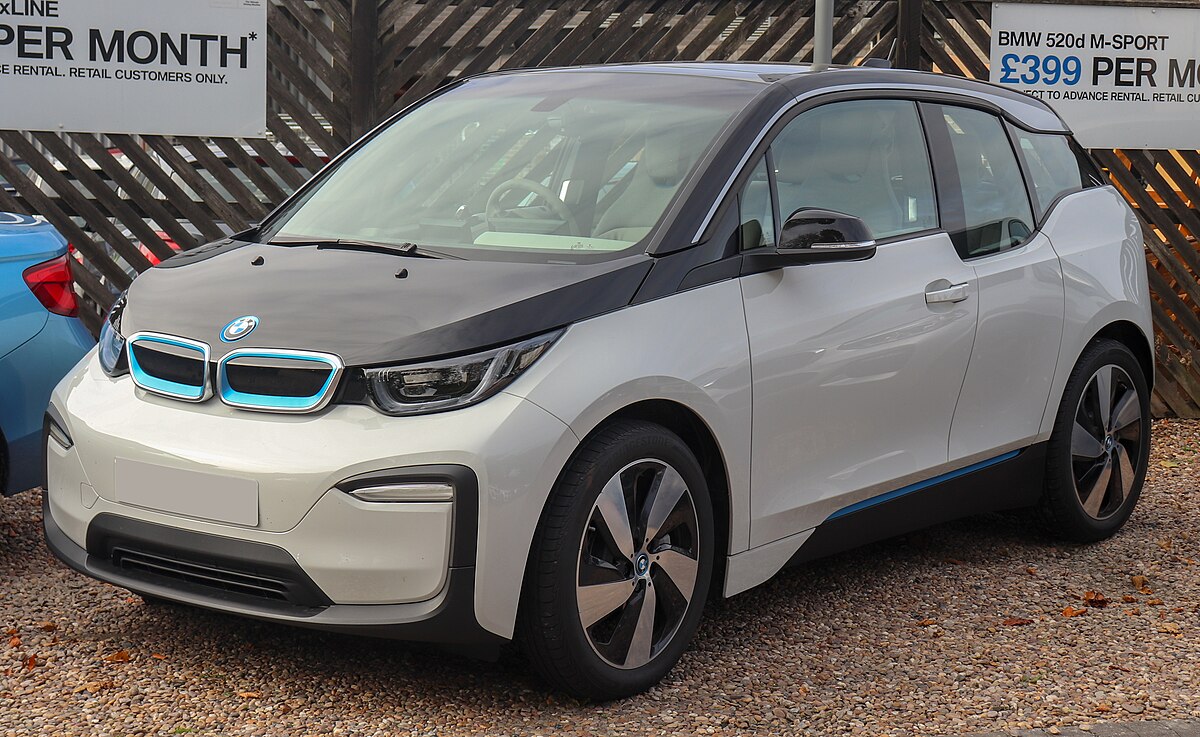
4. BMW i3
The BMW i3 is often praised for its unique design and urban-friendly size, making it a popular choice for city driving. However, it lacks onboard power outlets or any vehicle-to-load functionality, which reduces its versatility compared to other electric vehicles.
The i3’s battery and electrical systems are focused entirely on propulsion, with no provision for exporting power externally to charge devices or run appliances. This limits its usefulness in off-grid scenarios or during power outages.
As an urban-focused EV, the i3 prioritizes compactness and efficiency over multi-use features. While this suits many city dwellers who need a reliable, small electric car for daily commuting, it means the vehicle cannot serve as a mobile power source.
Users who require external power for camping trips, work sites, or emergencies will need to seek other solutions, such as portable generators or separate battery packs. This lack of onboard power reduces the i3’s appeal for buyers looking for an all-around EV.
BMW’s decision to omit onboard power outlets likely stems from the i3’s design priorities and relatively small battery pack, which ranges from approximately 42 kWh in earlier models to around 42.2 kWh in later versions.
This smaller battery limits the available power for external use without affecting driving range negatively. Adding power export functionality would also require additional hardware and complexity, increasing costs and potentially impacting the car’s compact design.
Moreover, the absence of vehicle-to-load or vehicle-to-home capabilities means the i3 cannot provide emergency backup power, a feature that is gaining popularity in the EV market.
While the i3 remains a well-regarded vehicle for urban environments, its lack of useful onboard power features may lead consumers seeking more versatile EVs to look elsewhere.
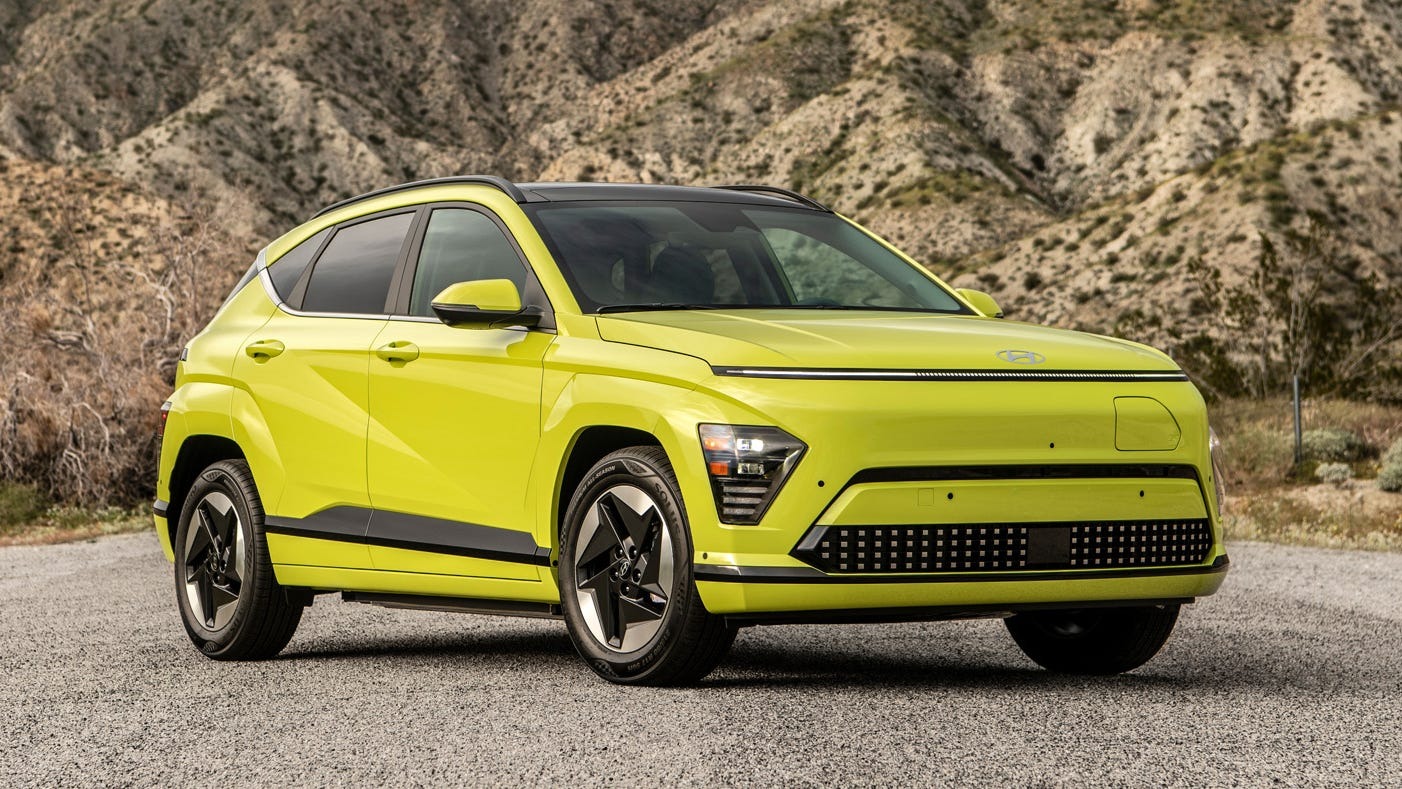
5. Hyundai Kona Electric
The Hyundai Kona Electric is a popular subcompact SUV that offers strong range and performance at a competitive price. However, it does not provide onboard power outlets or any vehicle-to-load functionality.
This omission limits the Kona’s usefulness beyond its core role as a daily driver, making it less appealing for consumers who want their EV to double as a portable power source for outdoor or emergency use.
Unlike the Hyundai Ioniq 5, which features vehicle-to-load technology allowing external devices to be powered directly from the car’s battery, the Kona Electric lacks such capabilities.
Users who want to power camping equipment, tools, or appliances must rely on external generators or battery packs, which reduces the convenience and versatility of the vehicle. This is a drawback for anyone who views an EV as more than just a means of transportation.
Hyundai has focused the Kona Electric’s design on delivering strong driving performance, good range, and affordability rather than expanding into the emerging market of multi-functional electric vehicles.
This strategy has made the Kona Electric popular among urban and suburban drivers, but it limits the car’s appeal for outdoor enthusiasts or professionals who need a reliable mobile power source.
As the market evolves and consumers increasingly demand integrated power features, the Kona Electric’s lack of onboard power outlets may be seen as a shortcoming.
Furthermore, the absence of vehicle-to-load and vehicle-to-home features means the Kona Electric cannot serve as an emergency backup power source, which is becoming a valued capability among EV owners.
This reduces the vehicle’s utility in power outage situations or off-grid environments where electricity is unavailable. Despite its many strengths, the Kona Electric’s limited onboard power options place it behind other EVs that offer greater versatility.
Also Read: 5 Nissan Engines That Rarely Die and 5 That Always Do
The role of electric vehicles is expanding rapidly, and their potential as mobile power sources is becoming one of their most compelling advantages. As battery technology advances and manufacturers recognize the benefits of onboard power outlets and vehicle-to-load capabilities, more EVs are beginning to offer these features.
Models like the Ford F-150 Lightning, Rivian R1T, and Hyundai Ioniq 5 showcase the tremendous value that comes from integrating high-capacity, versatile power outlets into the vehicle design.
These outlets open new possibilities for using EVs in practical, everyday ways, whether it is powering tools on a job site, supporting outdoor adventures, or serving as emergency power backups during outages.
Such features transform electric vehicles from simple transportation devices into essential lifestyle tools, making them attractive to a broader range of consumers.
In contrast, many established and affordable electric cars like the Nissan Leaf, Chevrolet Bolt EV, and Volkswagen ID.4 remain focused solely on driving performance and efficiency, without offering any onboard power export functionality.
While these vehicles excel at their primary task, providing reliable and economical transportation, they lack the versatility that comes from built-in power outlets.
This gap in capability means owners miss out on important conveniences and may need to invest in additional equipment to meet their power needs. For some buyers, especially those who value utility and preparedness, this limitation could be a significant drawback.
The growing divide between EVs with and without useful power outlets reflects broader trends in the electric vehicle market and consumer preferences. Some users prioritize cost, range, and compact design and are satisfied with an EV that simply gets them from point A to B.
Others expect their vehicles to serve multiple functions, supporting their work, hobbies, and emergency plans. As electric vehicle technology matures, onboard power features will likely become more common, even in smaller or more affordable models, as manufacturers respond to these evolving expectations.
Choosing the right electric vehicle means considering more than just range, price, and performance. It also involves thinking about how the vehicle will fit into one’s lifestyle and whether the ability to provide external power is important.
For those who regularly need mobile electricity, EVs with onboard power outlets offer clear advantages that justify their potentially higher cost.
For others focused solely on driving efficiency and affordability, models without these features may still be the right choice. Understanding these distinctions helps buyers make smarter decisions and appreciate the full spectrum of what modern electric vehicles can offer.
In the end, the inclusion of onboard power outlets is more than just a convenience it signals a shift in how vehicles are perceived and used. Electric vehicles are no longer just about clean transportation; they are becoming versatile energy hubs capable of supporting a wide range of human activities.
As more manufacturers embrace this trend, consumers will benefit from greater choice and flexibility, accelerating the adoption of electric vehicles and making sustainable transportation a practical reality for all.

